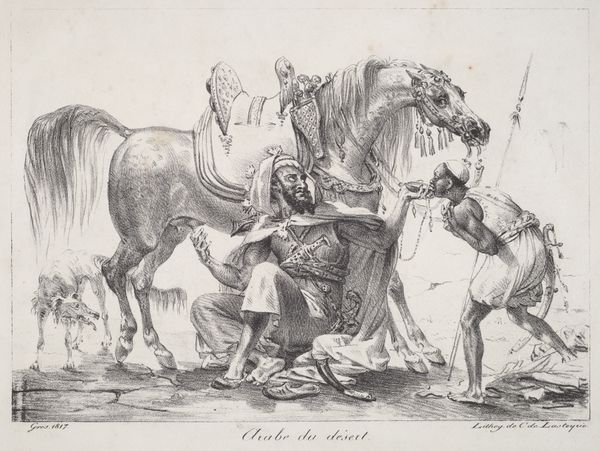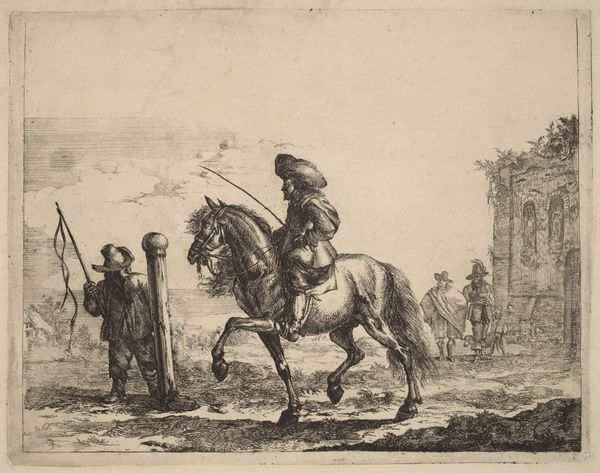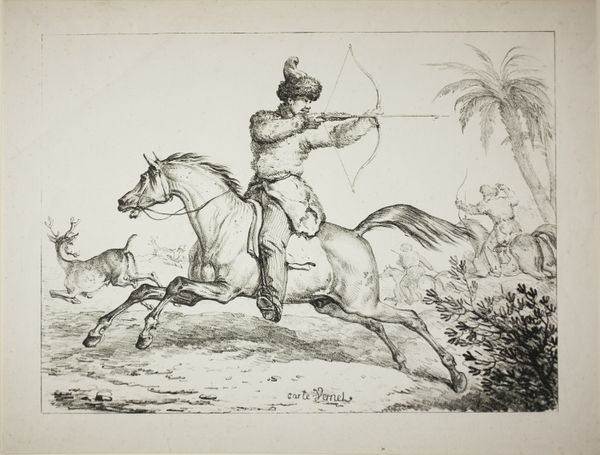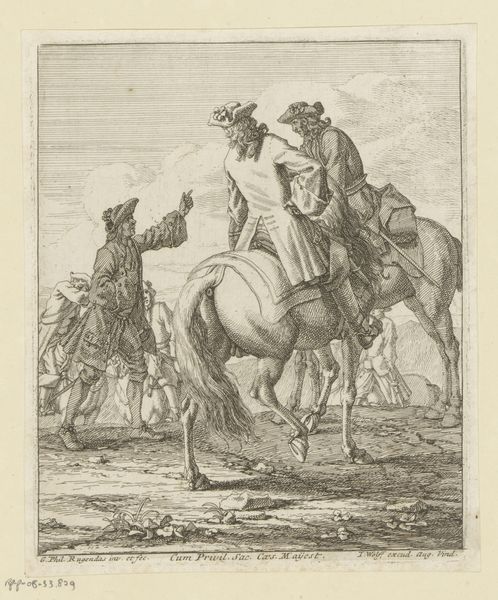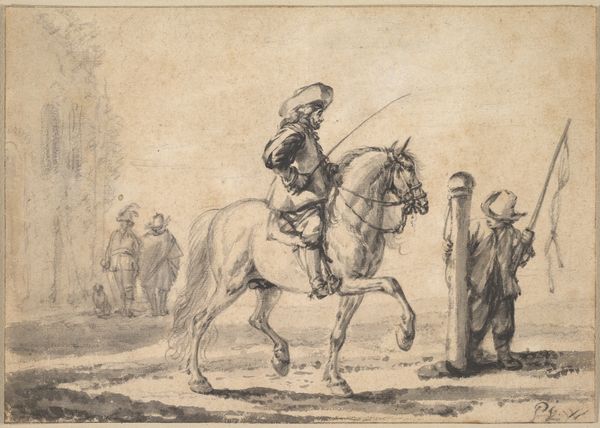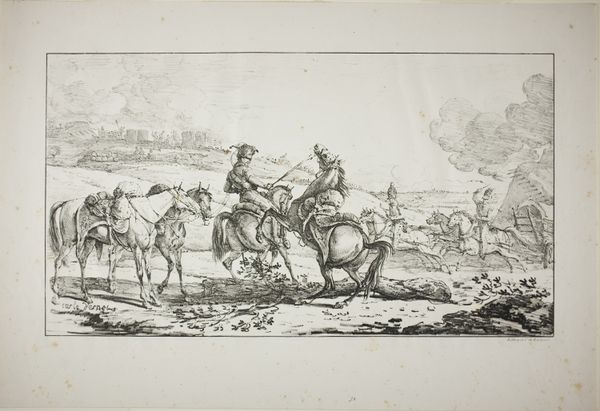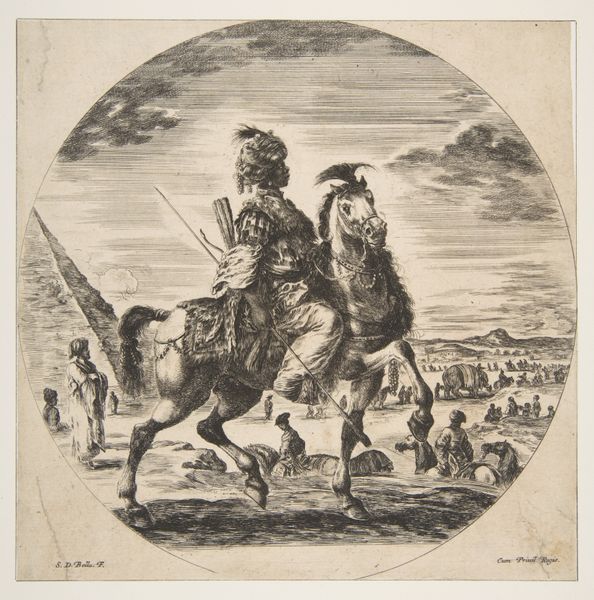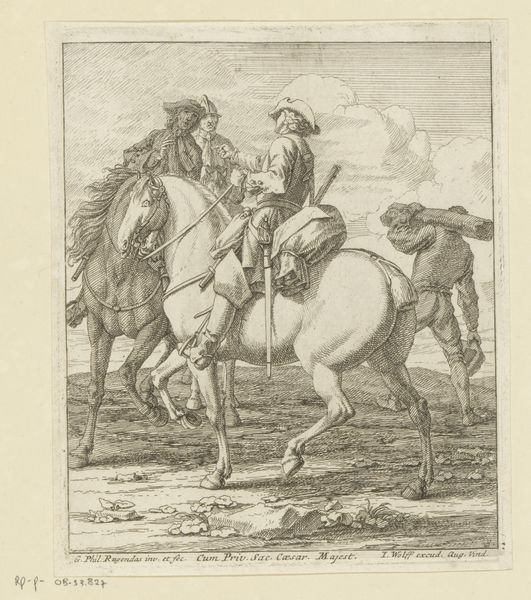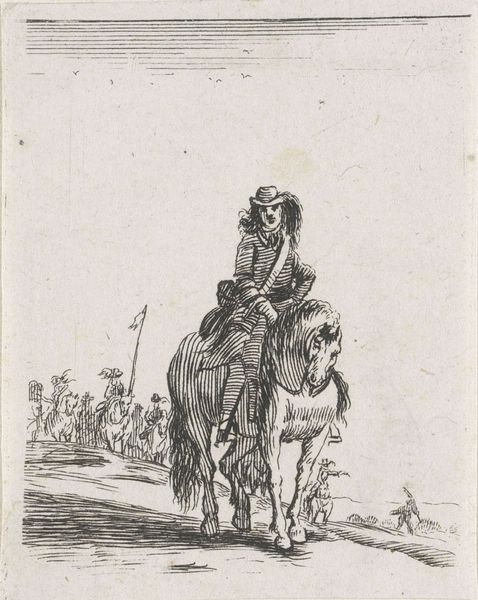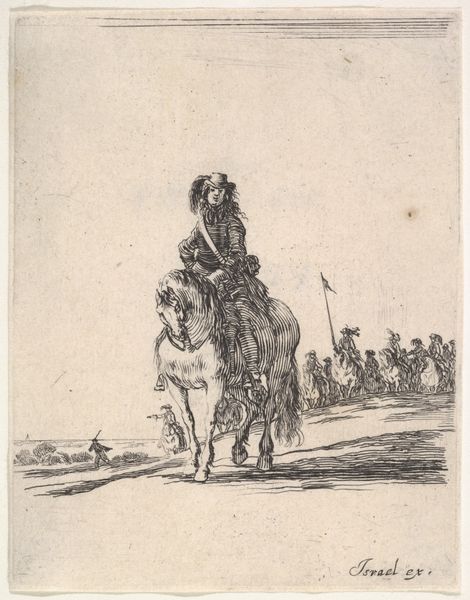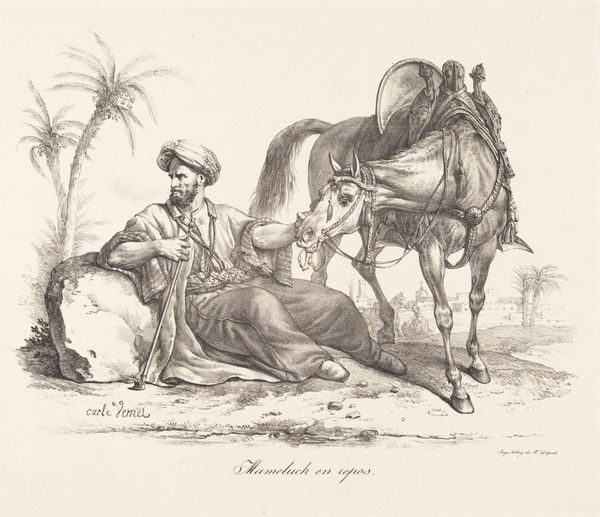
drawing, lithograph, print, paper
#
portrait
#
drawing
#
ink drawing
#
lithograph
# print
#
landscape
#
paper
#
romanticism
#
orientalism
#
france
#
history-painting
Dimensions: 248 × 359 mm (image); 322 × 447 mm (sheet)
Copyright: Public Domain
Editor: Here we have Carle Vernet’s "Chief Mameluk" from around 1817, created using lithography on paper. It has such incredible detail for a print; the way the lines capture the light reflecting off the horse's coat is particularly striking. What compositional elements stand out to you? Curator: The meticulous hatching and cross-hatching undoubtedly structure the entire composition. Notice how Vernet uses variations in line density to suggest depth and volume. It creates an intriguing play of light and shadow. Did you observe how the strategic placement of the figures helps move the eye across the landscape? Editor: Yes, the raised hand really guides my eye, and the figures get smaller, naturally. Are you talking about some kind of directional force created by the arrangement of figures? Curator: Precisely. The entire composition relies on creating and resolving visual tension using compositional balance and hierarchy. The texture achieved through lithography further emphasizes the dynamic interplay of light and shadow, giving the figures presence. It is interesting how Vernet guides us to understand the whole narrative solely through visual language. Editor: That’s fascinating. I hadn’t considered the relationship between line work and narrative. There’s so much to consider when viewing a work like this. Curator: Indeed. Analyzing the formal elements is often key to unlocking meaning within a work of art. Editor: Absolutely. This new perspective has transformed my understanding of Vernet's skill. Thanks so much.
Comments
No comments
Be the first to comment and join the conversation on the ultimate creative platform.
